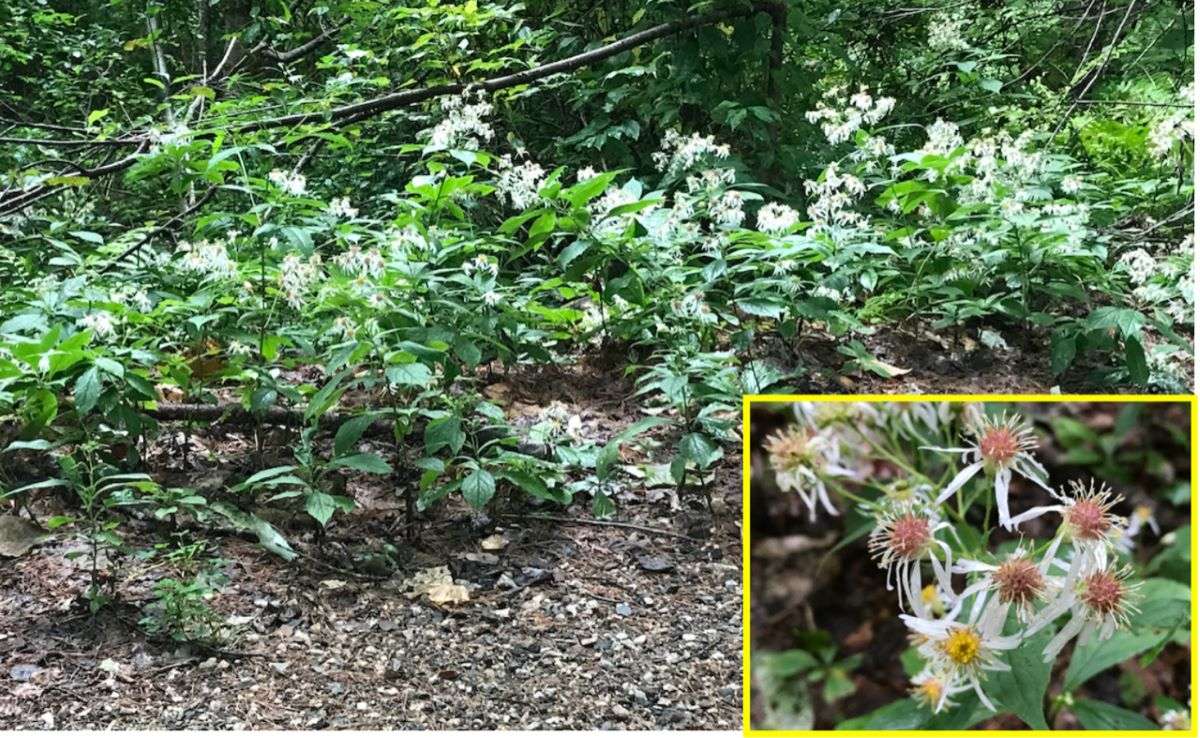Out in the Woods
- September 13th 2024
- Out in the Woods

Delicate Beauties Bloom Along Sanford Trails
By Kevin McKeon, Maine Master Naturalist
The season is changing, and that means Sanford’s trails are blooming with all kinds of life, from butterflies to birds, ants and other creatures in search of pollen from the booming wildflower population. A recent walk along the trails near Deering Pond revealed many colonies of whorled asters — a late summer to early fall blooming wildflower native to New England.
The whorled aster, Oclemena acuminata, also called the sharped-toothed nodding aster, is a delicate beauty currently showing off its fine bristly white to pink flowers — often in colonies along small forest openings, like along our trails. Whorled wood asters grow to about 3 feet tall but are most commonly between 8 and 30 inches, and like other asters, are a minor food source for wildlife. Some insects feed on the plant, and a few bird species eat the seeds. Also, chipmunks and mice browse on the leaves.
A whorl can be loosely defined as an arrangement of at least three leaves, petals, or branches that radiate from a single point on the stem, but the leaf arrangement of this aster really doesn’t fit the definition. The leaves tend to be crowded near the top of the plant in a tight alternating spiral on the stem, thus appearing to be whorled.
The whorled aster spreads by underground runners, forming easily noticeable colonies in cool, partially shaded, wooded locations. It is classified as a threatened species in Kentucky and presumed extirpated, or locally extinct, in Ohio, where it historically was found only in the far northeastern corner of the state. In the southern part of its range, in the Appalachian Mountain states, it’s called the mountain aster and is usually found above 6,000 feet elevation. Otherwise, it’s found, often at higher elevations, from northeast Georgia north to Maine, and in eastern Canada.
So, while enjoying a leisurely, nature-bathing jaunt along the Sanford Rail Trail between Deering Pond and Oak Street, slow down a bit to take in the delicate beauty of the whorled wood aster colonies. If you have one (and every footpath walker should!), put your hand lens up to one of these little flowers and peer at the wonder of the many individual flowers inside one of these whiteish gems!





